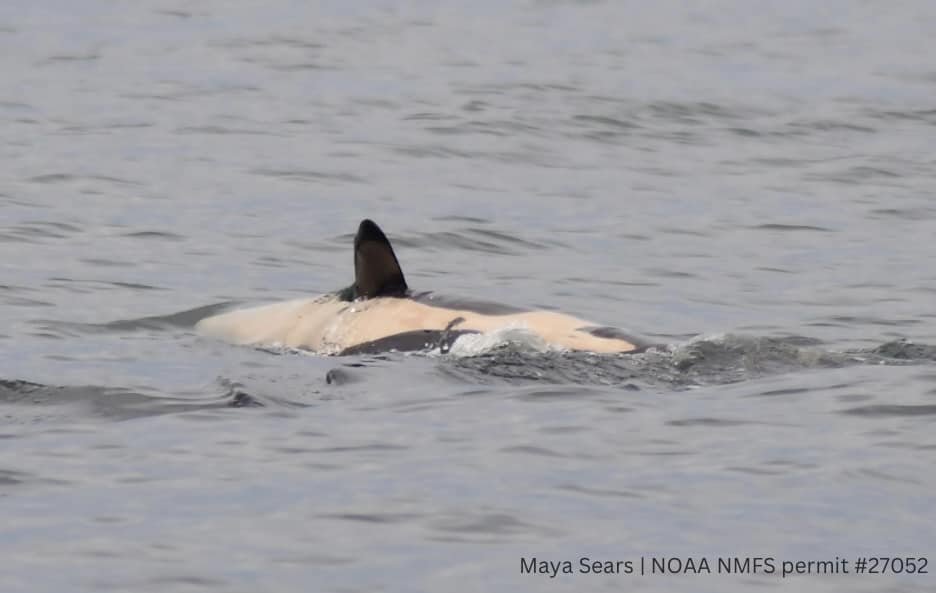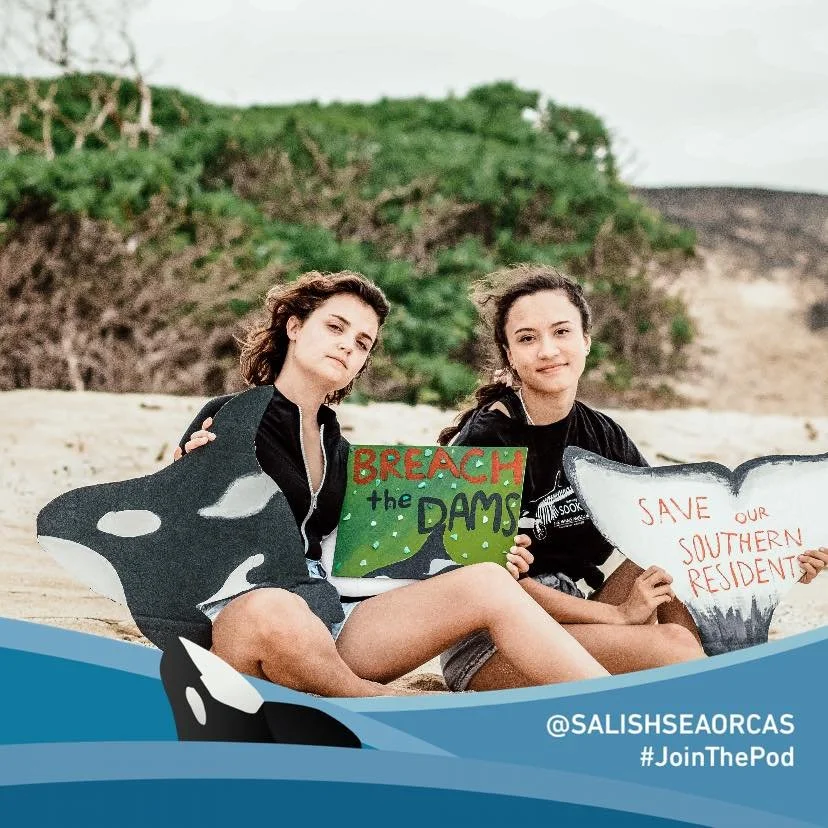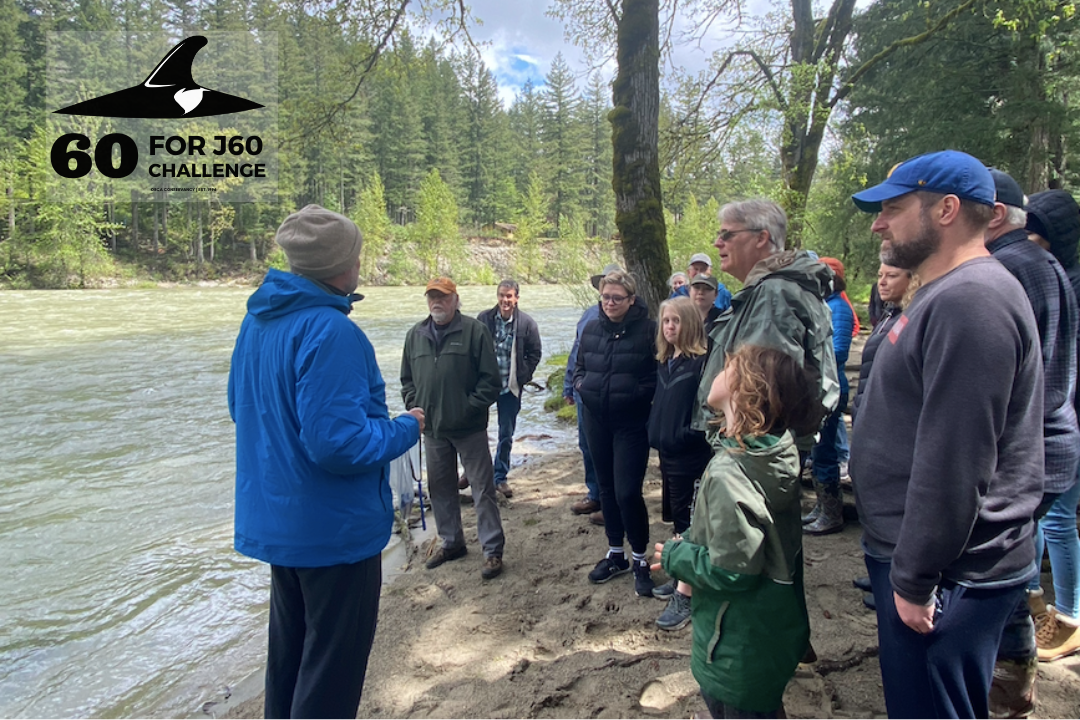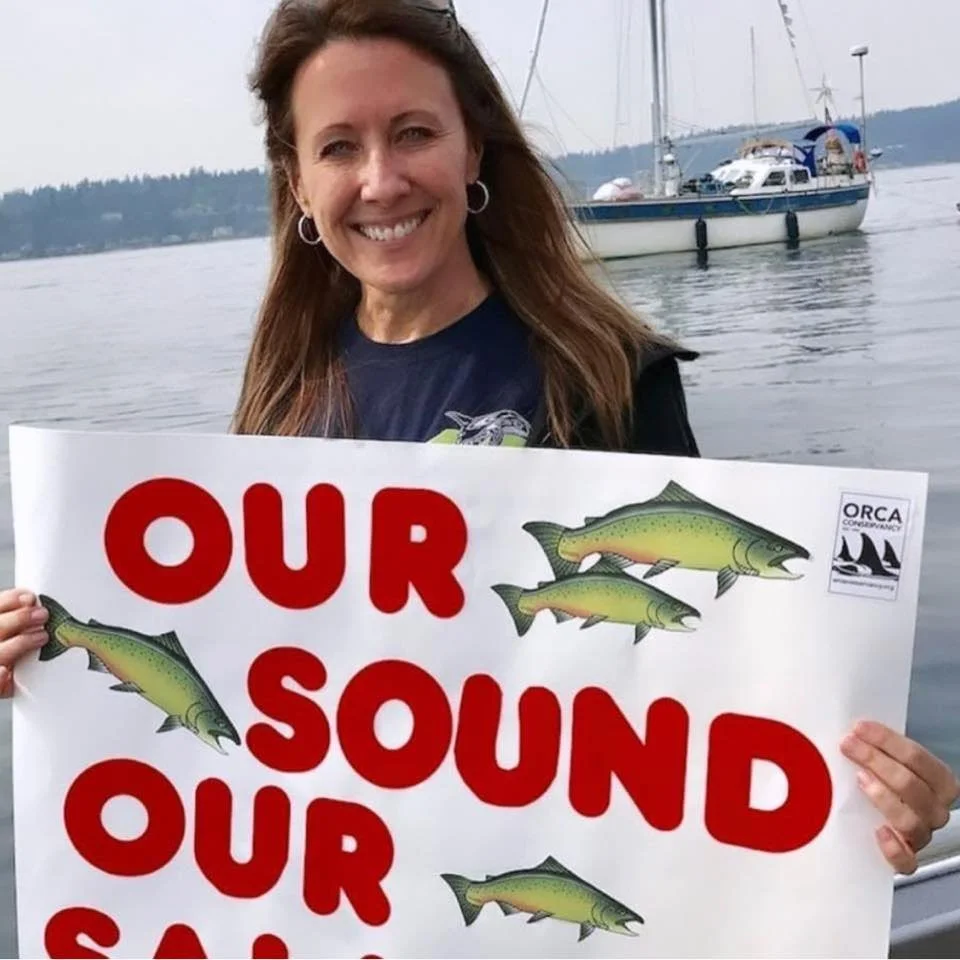60 FOR J60 Challenge
Instead of a moment of silence for J60, we are challenging you to a moment of action in our 60 of J60 Challenge.
In this challenge, we are asking people to take 60 minutes out of their week to do something to help the endangered Southern Resident killer whales. The Southern Residents are on the brink of extinction, but they aren’t past the point of no return. So let’s take action now in honor of J60.
These are just a small handful of things you can do. So we challenge you to take 60 for J60! If you are up for the challenge, tag us on social media to be featured in our stories or on our website!
“What if I am not a Washington or US Resident and can’t participate in the Action Alerts?”
For our friends up in Canada, we have a Canada Action Item! For all of our friends outside North America, you can still help by reducing your carbon footprint, voting with your dollar, using eco-friendly products, educating friends and family about the plight of the Southern Residents, donating to help fund our initiatives, and participating in conservation events in your own community. Our ecosystems are all connected, and what helps the environment where you live, will have the global community as a whole.
“What if I’m a kid? Is there anything that I can do?”
Absolutely! There many things you can do as a kid to help the Southern Residents. Here are a few of our favorite suggestions:
Write and call your representatives! Political leaders love hearing from kids, and sometimes, kids have more influence than adults. Take a look at our Action Alert items for a list of things you can contact your representatives about, as well as contact information.
Ask your parents to volunteer with you at nearby conservation events. If you live in the Western Washington area, you can find information and sign up for our salmon habitat restoration events which are family-friendly! And if there are no events in your area, get your friends, classmates, or family together and host your own community event!
Research the sustainability of your school and find ways your school could be more climate-friendly. Take the list of ideas and suggestions and present them to teachers and the school board to implement, to make your school eco and whale-friendly.
J60’s Story
During his short life, J60 captured the hearts of many, awing spectators and keeping the internet on their toes as to who his mother was.
J40 Suttles along side J60 - Photo Credit: Maya Sears | NMFS Permit 27052
On December 26th, 2023 was in the inland waters of Puget Sound. Local shore-based whale watchers captured photos and videos of what appeared to be a brand-new calf. Notably, all the known calves in J Pod are over a year old and have grown out of the yellow, orangish pigment that is seen on new calves, however, this calf was quite small and a yellowy-orange color, indicating it was less than a year old.
During J Pod’s time in Puget Sound, researchers Maya and Mark Sears were able to document the new calf, sharing photographs with the Center for Whale Research (Center), who confirmed this was a brand new calf, making it the first one born to J Pod since J59 in 2022. In the initial encounter with the new calf, Sears observed and photographed the new calf alongside J40 Suttles, a 20-year-old female who has not yet had a calf. The Center had previously seen J Pod without the calf on December 23rd, meaning the calf had been born sometime after the 23rd to the 26th, making it just days old upon its discovery.
In the following days, the Sears team continued to spend time with J Pod, documenting the new calf who seemed to be remaining alongside J40, traveling in the echelon position, indicating she was the most likely mother. They were also able to photograph the underside of the new calf to determine the sex. This information was sent to the Center who confirmed the sex to be male and assigned the official alphanumeric ID as J60. The Center stated they believed J40 to be the mother, but wanted a few more encounters with J Pod to confirm.
Underside of J60 | Photo Credit: Maya Sears | NMFS Permit 27052
After spending around a week foraging in Puget Sound, J Pod eventually departed and on January 3rd, 2024, the Center was able to observe J Pod. In their encounter, they had anticipated confirming the mother, but in a strange turn of events, J60 was observed traveling alongside J16 Slick, a female estimated to be around 52 years old and the matriarch of the J16 matriline. Based on her age and that she was likely post-reproductive as well as the fact that drone data from previous months did not reveal J16 to be in late-stage pregnancy, the Center ruled J16 out as the mother.
During the entire encounter, J60 remained with the J16 matriline. At this point, it was speculated that J36 Alki and J42 Echo, the daughters of J16, could be possible mothers. In the summer of 2023, photogrammetry data released by SR3 confirmed J36 to be in late-stage pregnancy, but throughout the remainder she was not seen with a calf, nor did research agencies publically report on the pregnancy status of J36, suggesting that the pregnancy had failed.
Throughout the encounter on the 3rd, the Center was able to document all members of J Pod including J40, and confirmed that there was not another calf, unlike the case with the L12s. During the summer of 2023, a new calf was spotted in the L12s. Later it was revealed that there was not just one, but instead two calves, L126 and L127. This was not the case with J Pod, and researchers were able to confirm J60 based on his eyepatch.
Babysitting is a common cultural practice within the Southern Resident killer whale community, and both J40 and J16 are known to be babysitters. So the mystery of the maternity of J60 began, who was his mother?
On January 7th, the Center once again observed J Pod, only this time J60 was seen traveling in the echelon position of J42 Echo, the youngest daughter of J16, supporting the theory that J16 could possibly be the grandmother to J60 and that J36 or J42 could be potential mothers. It was also noted that J42 had fresh rake marks (markings caused by killer whale teeth) on her left side.
While the Center did not comment on the health and body condition of J60, photographs shared by the Center revealed the calf to be looking thin and lumpy. Orca Conservancy scientists noted that it’s normal for newborn calves to appear lumpy and bumpy, but after a few weeks they round out, which did not appear to be the case with J60. Concerns from the Orca Conservancy camp as well as others in the community began to develop based on the images and the fact that J60 was observed with multiple females when he was at the age where remaining with his mother was crucial for him to nurse.
J60 alongside J16
Photo Credit: Center for Whale Research | NMFS PERMIT: 27038/ DFO SARA 388
J60 and rake marks on J42
Photo Credit: Center for Whale Research | NMFS PERMIT: 27038/ DFO SARA 388
J60 body condition
Photo Credit: Center for Whale Research | NMFS PERMIT: 27038/ DFO SARA 388
Twenty days after the previous encounter, J Pod made a brief appearance in the Salish Sea, and the worst was confirmed. The Center was able to document every single member of J Pod, except for J60. The Center has a protocol where they wait for three encounters to confirm a missing individual as deceased, but based on the young age of the calf and the duration of the encounter with J Pod, the Center believes J60 to be deceased as he would not be able to survive that long apart from his mother.
The Southern Resident killer whales are a critically endangered species, and one of the harsh realities surrounding this population is the high mortality rate with calves due to lack of food (Chinook salmon) and high levels of toxins.
With the loss of J60, the mother was never officially confirmed, but researchers suspect J42 to have been the mother, and have listed the J60 as the “probable” calf to J42. Other potential mothers included J40 and J46.
Notably, all the potential mothers have not yet had calves, making J60 the first calf born. During the gestation period, a developing calf absorbs toxins. Firstborn calves have the highest offload of toxins from their mother because they are getting the largest offload, compared to second or thirdborn calves, who will only receive a toxic offload built up from the time of the elder offspring. The mother’s milk also has a high level of toxins. These are likely factors as well as nutritional stress that likely contributed to the death of J60.
J60’s death is the latest in many calf mortalities in the last several decades, and is an indicator that we have a long way to go to recover this population.
Tag Us and Show Us Your 60 For J60














